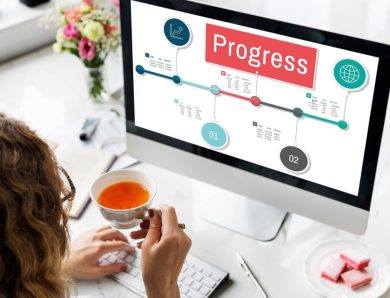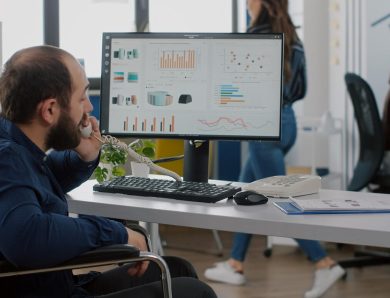
How Employee Monitoring Software Can Transform Your Remote Team’s Efficiency
In recent years, remote work has transformed from a temporary trend into a permanent business model. As organizations embrace this new way of working, challenges such as maintaining productivity, fostering accountability, and ensuring seamless communication have emerged. One of the most effective solutions to these challenges is employee monitoring software.
When used correctly, employee monitoring software can revolutionize how remote teams function, significantly enhancing their efficiency. In this article, we’ll explore the transformative effects of employee monitoring software on remote teams and why it’s becoming essential in the modern workplace.
1. Ensuring Accountability and Transparency
One of the greatest concerns for employers with remote teams is the lack of visibility into daily tasks. Employee monitoring software bridges this gap by providing insights into how employees spend their work hours. It tracks activities such as time spent on tasks, applications used, websites visited, and even idle time.
By implementing this tool, managers can encourage accountability across the team. Employees become more conscious of their work patterns, which promotes transparency. This fosters a culture of responsibility, where team members take ownership of their tasks, knowing that their efforts are visible and quantifiable.
2. Boosting Productivity through Time Management
Remote work comes with the risk of distractions, from home life interruptions to the temptation of unrelated internet browsing. Employee monitoring software helps manage time effectively by tracking productive and non-productive activities. The data it provides allows managers to understand where time is being wasted and gives employees insight into how they can optimize their workday.
For example, many employee monitoring platforms feature tools like automatic time tracking and project-based time allocation, enabling team members to focus more on high-priority tasks. Some software even sets productivity benchmarks, giving teams the motivation to meet or exceed goals.
3. Facilitating Data-Driven Performance Management
One of the major advantages of employee monitoring software is the ability to gather data-driven insights into performance. Remote teams often struggle with receiving timely feedback or understanding their performance metrics. Monitoring tools allow managers to evaluate work output based on concrete data such as time spent on tasks, project progression, and overall productivity trends.
Managers can use these insights to offer constructive feedback, identify top performers, and address areas for improvement. By tailoring feedback based on actual performance metrics, managers ensure employees feel supported in their roles and motivated to improve.
4. Improving Task and Project Management
Employee monitoring software isn’t just about tracking; it often includes project management features that help streamline workflows. Many platforms allow employees to log time against specific tasks, set deadlines, and monitor task progress. This reduces confusion about what’s expected of each team member and helps prioritize work according to deadlines.
For managers, this means having a clearer view of project timelines and potential bottlenecks. Rather than chasing after progress reports, they can access real-time data to monitor how each project is moving forward. This increases the likelihood of projects being completed on time and within scope.
5. Enhancing Communication and Collaboration
While employee monitoring software is often thought of as a management tool, it can also improve communication within remote teams. Many monitoring platforms integrate with communication tools like Slack, Microsoft Teams, and project management apps. This ensures that employees can collaborate effectively, even when they are working in different time zones.
With features like activity tracking, managers and team members can quickly assess who’s working on what, eliminating miscommunication or overlapping efforts. Additionally, this software enables smoother handoffs between tasks and projects, ensuring all team members are aligned on goals and progress.
6. Identifying and Reducing Burnout
One of the risks of remote work is the potential for burnout, as employees may feel pressured to be “always on.” Employee monitoring software helps managers identify overworked employees by tracking working hours and ensuring staff maintain a healthy work-life balance. By analyzing patterns, such as excessive overtime or prolonged idle periods, managers can take proactive steps to address issues before they escalate.
Regularly reviewing these insights helps organizations create a more sustainable work environment, ensuring employees remain productive without sacrificing their well-being.
7. Ensuring Compliance and Security
For remote teams, data security and compliance can be major concerns. Employee monitoring software can act as a safeguard by tracking employee actions and monitoring the usage of sensitive company data. For industries where compliance is critical, such as finance or healthcare, monitoring tools can help ensure that employees follow protocols and avoid data breaches.
Additionally, monitoring software often includes features like website and application restrictions to prevent employees from accessing unapproved resources during work hours, ensuring the safety of company data.
8. Seamless Integration with Existing Tools
The beauty of employee monitoring software lies in its ability to integrate with the tools remote teams are already using. Many monitoring platforms seamlessly connect with project management software like Trello, Asana, or Jira, as well as communication platforms like Zoom or Microsoft Teams. This means that instead of creating extra work for your team, the software works in the background to enhance existing workflows.
9. Encouraging Self-Improvement
Employees who have access to monitoring reports can gain valuable insights into their personal work habits. By understanding where their time goes each day, team members can identify inefficiencies and adjust their work patterns accordingly. This encourages self-improvement and empowers employees to take ownership of their personal productivity.
Many tools offer features like self-reporting or personal dashboards that allow employees to track their own productivity in real-time. Over time, this can lead to a more engaged and self-motivated workforce.
Conclusion
Employee monitoring software has become an invaluable tool for companies managing remote teams. By fostering transparency, promoting accountability, and optimizing time management, this software helps teams operate at their highest level of efficiency. It not only empowers managers to make data-driven decisions but also gives employees the tools to enhance their productivity.
For companies looking to succeed in the remote work landscape, employee monitoring software is no longer a luxury but a necessity. By leveraging the right monitoring tools, organizations can transform their remote teams into highly efficient, engaged, and productive units, driving long-term business success.










No Comment